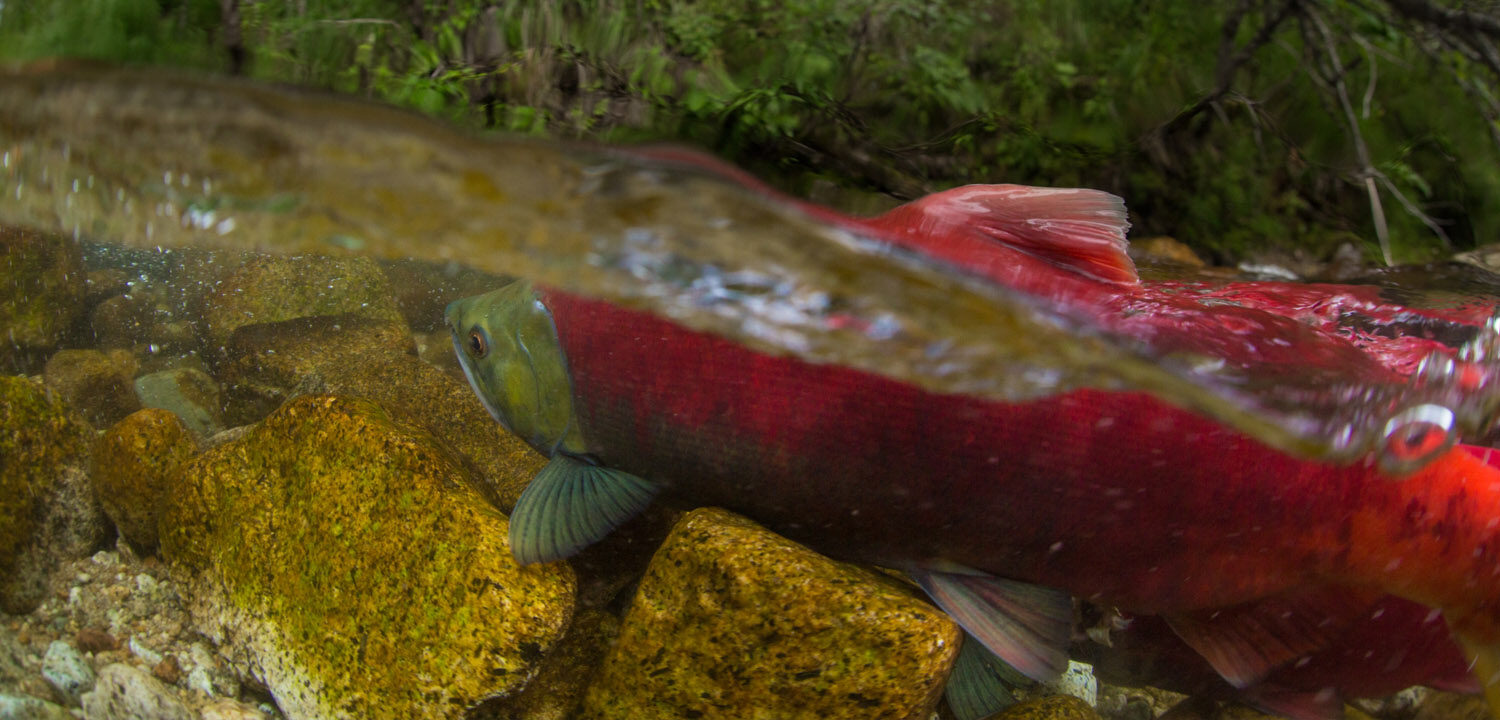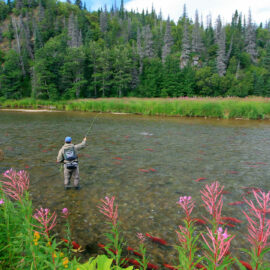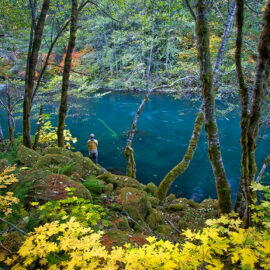In Alaska, new hydro projects should make salmon protection a high priority.
Alaska’s wilderness is unparalleled in North America: just 1% of the state is permanently altered by human activity. The state’s tens of thousands of undeveloped rivers, lakes, and streams make for the best salmon habitat anywhere. And these waterways’ consistent supply of cold, clean water supports some of the biggest salmon runs on the planet.
As we think proactively about protecting salmon in the face of climate change and development, Alaska’s pristine, complex watersheds – places like the Nushagak and Kvichak in Bristol Bay – are Wild Salmon Center’s top priorities. Complex rivers like these that are unrestricted by development have the ability to absorb extreme flood events and buffer against temperature spikes.
But the sheer wildness that forms great salmon habitat and resilient rivers also makes it a rough place for humans to live. Particularly, Alaska is a tough place to get reliable, affordable electricity. With little infrastructure, villages and towns off the road system depend on polluting generators guzzling diesel at $10 per gallon. To promote strong communities, local leaders seek to improve standards of living through cleaner, cheaper power sources. Hydroelectricity is one option on the table – it taps a locally abundant, clean resource.
There is a path in Alaska to reliable clean energy and resilient salmon streams.
We think there is a way for communities throughout Alaska to have clean, affordable energy that doesn’t threaten salmon habitat. Our first choice would be wind, geothermal, and other non-hydro sources of clean power. But because of Alaska’s resources, hydropower will likely be part of the future energy mix.
Our experience fighting the Susitna Dam has led us to pivot toward a more proactive, comprehensive approach when looking to the hydropower projects of the future. Our goal is to avoid the same mistakes as the Lower 48: we can’t build a system of large dams at the expense of salmon.
My Alaskan colleagues and I are engaging fishing groups, local communities, and political leaders across the state to discuss the future of Alaskan energy development and how fish-friendly hydropower fits in. It’s clear that hydropower projects should make salmon protection a high priority, locating them primarily in lakes and other waterways without salmon (where some example projects in Alaska already exist). If they are built on salmon streams, hydroelectric projects should not degrade water quality, impede fish passage to important spawning, rearing or migratory habitat, nor significantly alter the flow of salmon streams.
There is a path for Alaska to ensure reliable energy and resilient wild salmon rivers, for the changing century to come. And we’re helping to shape that path.



